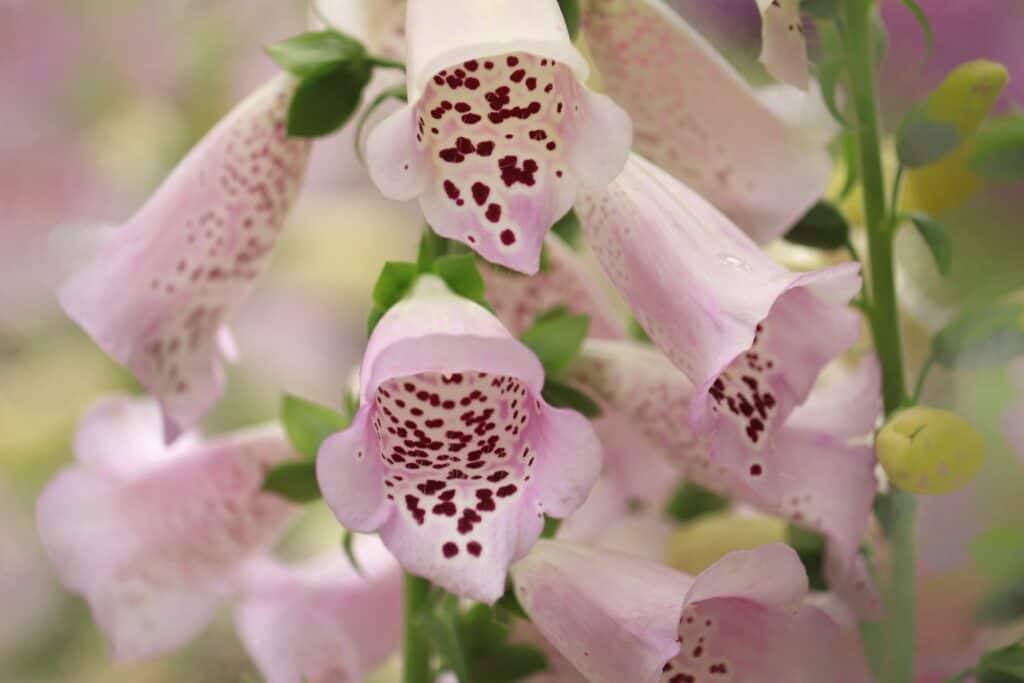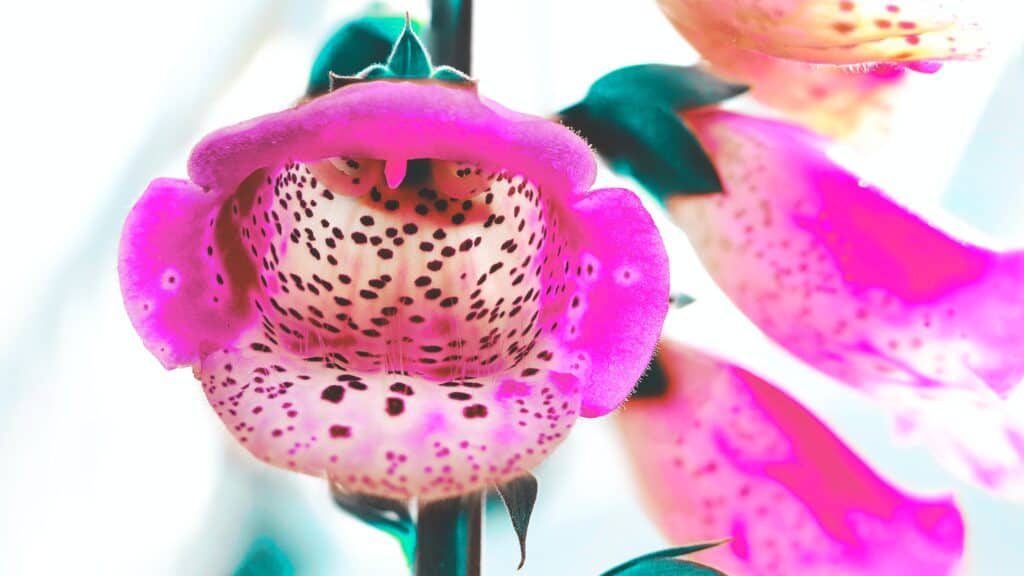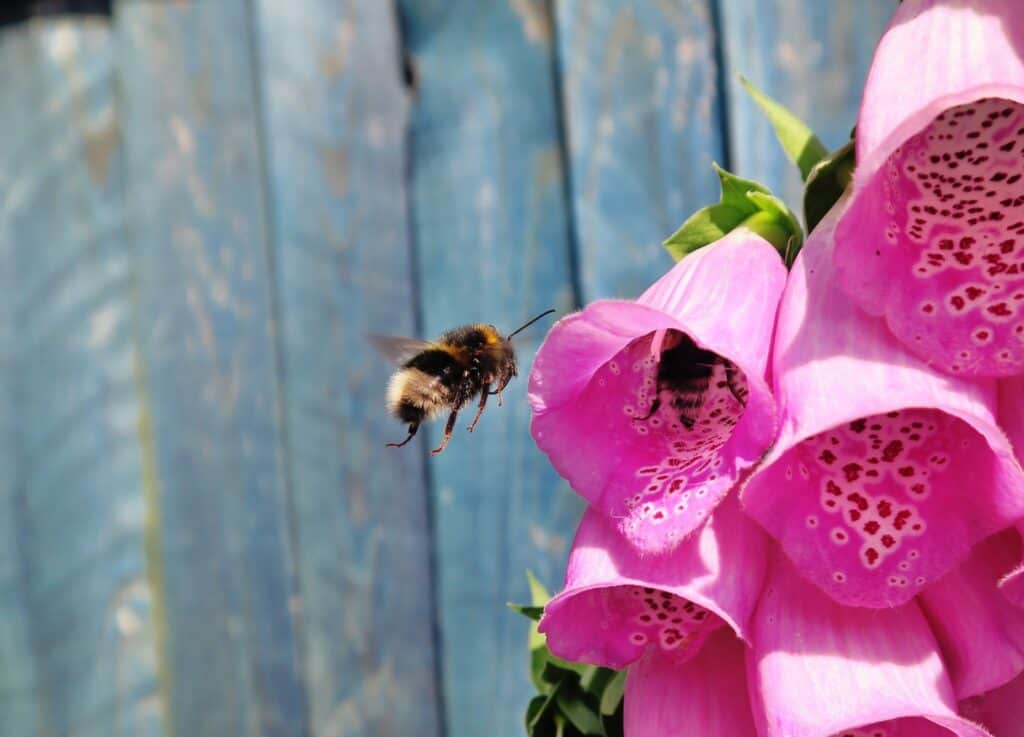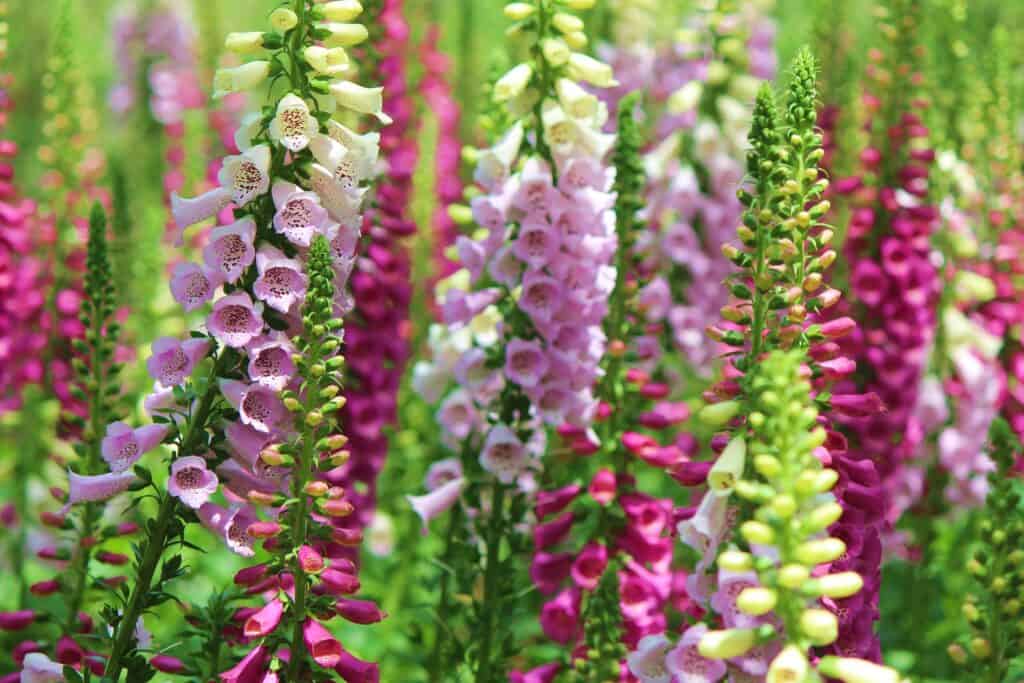Foxgloves are a group of plants in the genus Digitalis, known for their tall spikes of tubular flowers. The name “foxglove” is believed to have originated from a combination of two Old English words: “foxes” and “glôfa”, which means glove. Some say that the name may have arisen from the shape of the flowers being similar to the finger of a glove, while others suggest that the name comes from a belief that foxes put the flowers on their paws to soften their steps while hunting.
Foxgloves are native to Europe, Asia, and North Africa, and were introduced to North America as an ornamental plant in the 19th century. The most commonly grown species is Digitalis purpurea, which is a biennial plant that produces tall spikes of pink, purple, or white flowers in late spring to early summer.
Foxgloves have a long history of medicinal use. The plant contains several cardiac glycosides, including digitalin, which are used in the treatment of heart conditions such as congestive heart failure and atrial fibrillation. However, it is important to note that the plant is highly toxic if ingested, and can cause serious health issues or even death. Therefore, it is recommended to wear gloves when handling the plant and to keep it out of reach of children and pets.
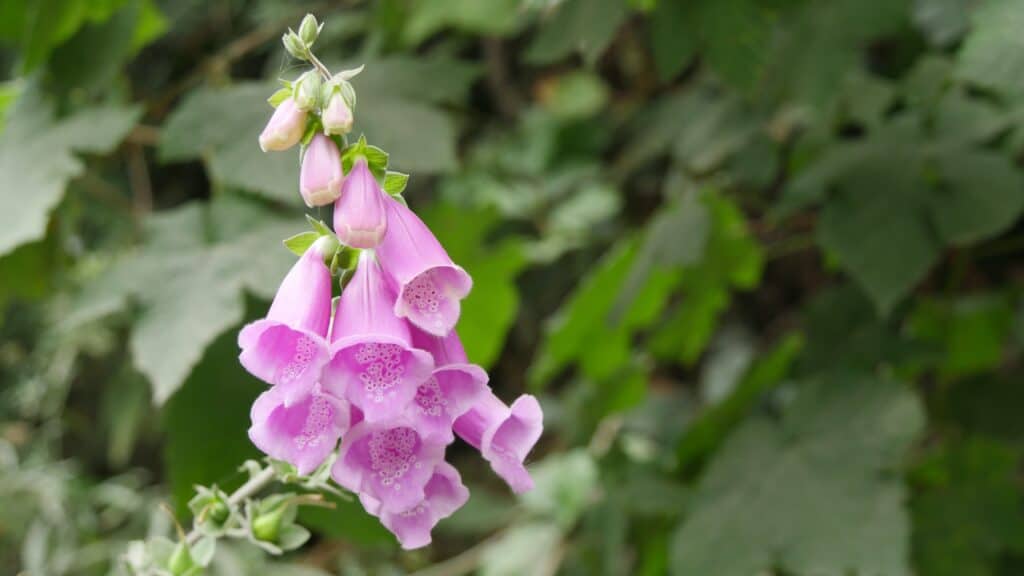
Foxglove is an ideal plant for novice gardeners because it is relatively easy to grow and care for. Foxgloves are adaptable to a range of soil types and growing conditions, and they can thrive in both full sun and light shade. They can also tolerate both drought and poor drainage.
Foxglove seeds can be sown directly in the garden or started indoors, making them a great choice for gardeners with limited space. They also grow quickly and can produce flowers in their first year of growth. Foxgloves are also self-seeding, which means they will drop their seeds and produce new plants in subsequent years.
In addition, foxgloves are relatively low-maintenance. They do not require frequent watering or fertilizing, and they are generally resistant to most pests and diseases. As long as they are planted in a suitable location with adequate drainage, foxgloves can thrive with minimal intervention from the gardener.
Overall, foxglove’s adaptability, self-seeding nature, and low-maintenance requirements make it an excellent choice for novice gardeners who want to add color and interest to their garden with minimal effort.
Varieties of Foxglove Flowers
Foxglove plants are an excellent choice for any garden enthusiast, as they come in a variety of sizes and colors, making them an attractive option for attracting butterflies and hummingbirds. Besides Rusty, Foxy, and Hybrid, there are many other foxglove flower varieties, including:
- Digitalis purpurea (Common foxglove)
This is the classic foxglove with spires of purple–pink flowers. It grows up to 5 feet tall and is best suited for large gardens.
- Digitalis grandiflora (Large yellow foxglove)
As the name suggests, this variety produces large yellow flowers that are perfect for attracting bees and hummingbirds. It grows up to 3 feet tall and does well in partial shade.
- Digitalis lanata (Grecian foxglove)
This variety has creamy-white flowers that bloom from late spring to early summer. It grows up to 4 feet tall and prefers full sun.
- Digitalis mertonensis (Strawberry foxglove)
This variety has unique flowers that are red and white, resembling a strawberry. It grows up to 3 feet tall and prefers partial shade.
When it comes to foxglove care, each type requires a slightly different amount of care and space. Rusty foxgloves are tall and require staking, making them suitable for large gardens.
Hybrid foxgloves are ideal for small spaces and are perfect for beginners as they are less demanding.
Foxy hybrids are short and don’t require staking, making them suitable for planting in pots or hanging baskets.
They are also sturdy enough to be moved around and used as cut flowers. To keep your foxgloves blooming throughout the summer months, consider purchasing extra stems occasionally.
Where to Plant Foxgloves
Foxglove is a beloved garden flower that can be grown in various climates. When choosing a location to plant foxgloves, keep in mind that they thrive in areas that get full sun to light shade. They can tolerate a range of soil conditions, but they prefer moist soil that drains well.
In colder regions, you’ll want to protect your plants from frost damage by covering them with a layer of mulch or straw.
To propagate foxgloves, try taking cuttings from each variety separately. You can also use rooting hormones to promote healthy root development. Once the cuttings have rooted, transplant them into individual containers filled with nutrient-rich potting mix.
During the colder months, be sure to keep the roots moist to prevent them from drying out. When spring arrives, move the plants outdoors to enjoy their beautiful blooms.
How to Grow Foxglove
Foxgloves are beautiful flowers that can be easily grown from seeds, either indoors or directly in the garden. Here’s how to grow them:
Starting Seeds Indoors:
- Sow the seeds in late winter or early spring.
- To germinate, place the seeds on damp paper towels in a warm area such as an airing cupboard. Check daily until the seeds have sprouted.
- Remove the paper towel when the seeds have sprouted and sow the seeds in a seed tray or peat pellets. Cover the seeds lightly with fine grit or vermiculite.
- Water regularly and check the temperature of the room. After 2 weeks, remove the cover and increase watering to ensure the seedlings get plenty of moisture.
- Continue to feed the seedlings by adding more vermiculite or peat pellets once a week.
- As soon as the first true leaves appear, transfer the seedlings to individual pots.
- Place the pots in a propagator set at 60-70°F. Mist the seedlings regularly so they stay cool.
- When the seedlings reach 1 inch tall, prick out the seedlings and plant them outside.
Direct Sowing in the Garden:
- Choose a sunny location with well-draining soil.
- Sow the seeds thinly, about 2mm deep, and cover them with a fine layer of soil.
- Water regularly to keep the soil moist.
- When the seedlings are big enough to handle, thin them out to about 30cm apart.
- Keep the plants well-watered and fertilized throughout the growing season.
- Deadhead regularly to promote new growth and prevent self-seeding.
- In colder climates, cover the plants with a layer of mulch to protect them from frost.
By following these simple steps, you can enjoy beautiful foxglove flowers in your garden all summer long.
How to Care for Foxgloves
Foxgloves are stunning perennials that require proper care to ensure their healthy growth and beautiful blooms. Here are some tips on how to care for foxgloves:
- Soil and Watering: Foxgloves prefer well-draining soil that is rich in organic matter. They thrive in moist soil conditions, so make sure to water them regularly, especially during the hot summer months. However, be careful not to overwater them, as this can lead to root rot.
- Sunlight: Foxgloves grow best in partial shade, although they can also tolerate full sun. If you plant them in full sun, make sure to keep the soil moist and provide them with some shade during the hottest part of the day.
- Fertilizing: Foxgloves need regular feeding to produce healthy blooms. You can use a balanced fertilizer every two weeks during the growing season to keep them healthy.
- Pruning: Foxgloves can grow quite tall, and the stems may become weak and flop over. To prevent this, stake the plants early in the season. You can also pinch back the tips of the stems to encourage bushier growth.
- Pest and Disease Control: Foxgloves are susceptible to several pests and diseases, such as aphids, rust, and powdery mildew. To prevent these problems, keep the plants well-spaced and remove any dead or damaged leaves. You can also use organic pesticides and fungicides to control pests and diseases.
- Division: Foxgloves can become crowded over time, which can lead to stunted growth and reduced flowering. To prevent this, divide the plants every three to four years in early spring or late summer. Gently dig up the clump and separate it into smaller sections, making sure that each section has roots and a good amount of foliage.
Common Pests & Plant Diseases
Foxglove plants are susceptible to many different types of pests and disease attacks. They can be attacked by aphids, caterpillars, mites, slugs, snails, scale insects, thrips, whiteflies, mealybugs, powdery mildew, rust, leafhoppers, root weevils, nematodes, fungi, viruses, and bacteria.
It’s important to regularly inspect your foxglove plants for signs of pests and diseases so you can take action quickly. One common pest that attacks foxgloves is aphids. These tiny insects suck the sap from the plant, causing the leaves to curl and distort.
To combat aphids, you can use insecticidal soap or neem oil. Caterpillars can also be a problem for foxgloves, particularly the larvae of the moth Mullein Moth. To control caterpillars, pick them off by hand or use a natural pesticide such as Bacillus thuringiensis.
Mites are another pest that can damage foxglove plants, causing yellow or brown spots on the leaves. You can control mites by spraying the leaves with water or by using a miticide. Slugs and snails are also common pests that can cause damage to the leaves and flowers of foxgloves.
You can control slugs and snails by handpicking them or by using a natural slug repellent such as copper tape or diatomaceous earth.
Foxgloves can also be affected by a variety of diseases, including powdery mildew and rust.
Powdery mildew appears as a white powder on the leaves, while rust causes orange or brown spots. To control these diseases, you can spray the plants with a fungicide. Leafhoppers, root weevils, nematodes, and viruses can also cause damage to foxgloves.
Proper plant spacing, good soil drainage, and regular fertilization can help prevent these problems.
In addition to treating pests and diseases, it’s important to give your foxglove plants enough space to grow and develop properly. Crowding the plants can increase the risk of disease and make it harder for you to care for them. Finally, you can take steps to prevent diseases like crown rot by providing proper drainage for your plants and avoiding overwatering.
What we love from Amazon this week
Buy these wonderful flowers directly from Amazon:




